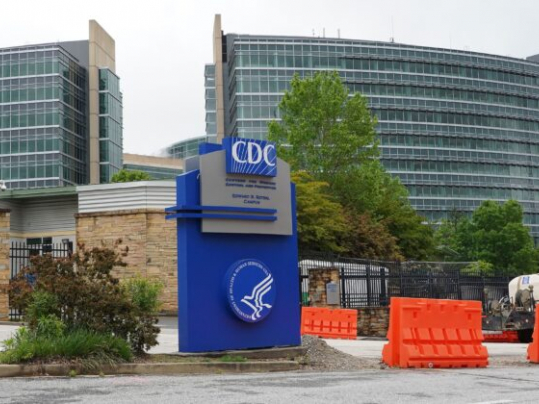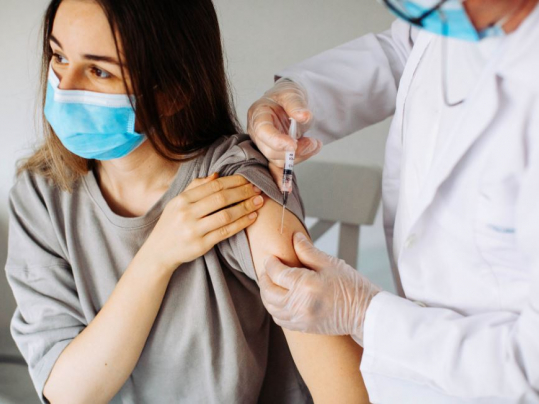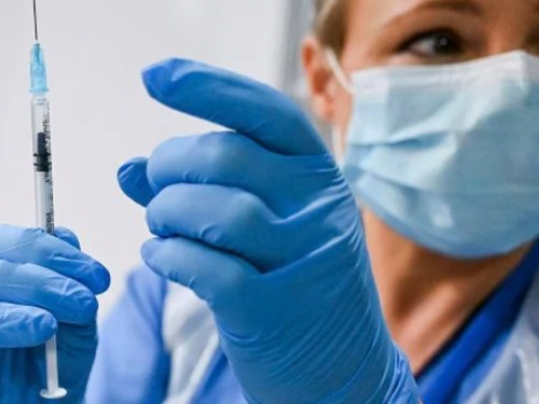How A Pandemic Was Created On The Myth Of Covid Hospitalizations, New Study Shows

According to a new nationwide study almost half of those hospitalized with COVID-19 have mild or asymptomatic cases. The study shows how a pandemic was created on the myth of COVID Hospitalizations.
From the start, COVID hospitalizations have served as a vital metric for tracking the risks posed by the disease. Last winter, the Atlantic magazine described it as “the most reliable pandemic number,” while Vox quoted the cardiologist Eric Topol as saying that it’s “the best indicator of where we are.”
On the one hand, death counts offer finality, but they’re a lagging signal and don’t account for people who suffered from significant illness but survived. Case counts, on the other hand, depend on which and how many people happen to get tested.
Presumably, hospitalization numbers provide a more stable and reliable gauge of the pandemic’s true toll, in terms of severe disease.
But a new, nationwide study (read below) of hospitalization records, released as a preprint, suggests that the meaning of this gauge can easily be misinterpreted—and that it has been shifting over time.
David Zweig, a New York based writer and author of the nonfiction book Invisibles and the novel Swimming Inside the Sun, explains the implications of the study in his article titled Our Most Reliable Pandemic Number Is Losing Meaning published in The Atlantic.
If you want to make sense of the number of COVID hospitalizations at any given time, you need to know how sick each patient actually is. Until now, that’s been almost impossible to suss out.
The federal government requires hospitals to report every patient who tests positive for COVID, yet the overall tallies of COVID hospitalizations, made available on various state and federal dashboards and widely reported on by the media, do not differentiate based on severity of illness.
Some patients need extensive medical intervention, such as getting intubated. Others require supplemental oxygen or administration of the steroid dexamethasone.
But there are many COVID patients in the hospital with fairly mild symptoms, too, who have been admitted for further observation on account of their comorbidities, or because they reported feeling short of breath.
Another portion of the patients in this tally are in the hospital for something unrelated to COVID, and discovered that they were infected only because they were tested upon admission.
How many patients fall into each category has been a topic of much speculation. In August, researchers from Harvard Medical School, Tufts Medical Center, and the Veterans Affairs Healthcare System decided to find out.
Researchers have tried to get at similar questions before. For two separate studies published in May, doctors in California read through several hundred charts of pediatric patients, one by one, to figure out why, exactly, each COVID-positive child had been admitted to the hospital.
Did they need treatment for COVID, or was there some other reason for admission, like cancer treatment or a psychiatric episode, and the COVID diagnosis was merely incidental?
According to the researchers, 40 to 45 percent of the hospitalizations that they examined were for patients in the latter group.
The authors of the paper out this week took a different tack to answer a similar question, this time for adults.
Instead of meticulously looking at why a few hundred patients were admitted to a pair of hospitals, they analyzed the electronic records for nearly 50,000 COVID hospital admissions at the more than 100 VA hospitals across the country.
Then they checked to see whether each patient required supplemental oxygen or had a blood oxygen level below 94 percent. (The latter criterion is based on the National Institutes of Health definition of “severe COVID.”)
If either of these conditions was met, the authors classified that patient as having moderate to severe disease; otherwise, the case was considered mild or asymptomatic.
The study found that from March 2020 through early January 2021—before vaccination was widespread, and before the Delta variant had arrived—the proportion of patients with mild or asymptomatic disease was 36 percent.
From mid-January through the end of June 2021, however, that number rose to 48 percent.
In other words, the study suggests that roughly half of all the hospitalized patients showing up on COVID-data dashboards in 2021 may have been admitted for another reason entirely, or had only a mild presentation of disease.
This increase was even bigger for vaccinated hospital patients, of whom 57 percent had mild or asymptomatic disease.
According to Shira Doron, an infectious-disease physician and hospital epidemiologist at Tufts Medical Center, in Boston, and one of the study’s co-authors, the latter finding may be explained by the fact that unvaccinated patients in the vaccine era tend to be a younger cohort who are less vulnerable to COVID and may be more likely to have been infected in the past.
The idea behind the study and what it investigates is important, says Graham Snyder, the medical director of infection prevention and hospital epidemiology at the University of Pittsburgh Medical Center, though he told me that it would benefit from a little more detail and nuance beyond oxygenation status.
But Daniel Griffin, an infectious-disease specialist at Columbia University, told me that using other metrics for severity of illness, such as intensive-care admissions, presents different limitations. For one thing, different hospitals use different criteria for admitting patients to the ICU.
The study suggests that COVID hospitalization tallies can’t be taken as a simple measure of the prevalence of severe or even moderate disease, because they might inflate the true numbers by a factor of two.
Meanwhile, according to leaked NHS data more than half of those hospitalized with Covid-19 in the UK only tested positive after admission to the hospital.
On the other hand, you aren’t legally allowed to know which variant gave you COVID-19, even if it’s Delta. No test exists for any variant of Covid, and no laboratory anywhere is planning to make one.
Its an open COVID-19 variant fraud and why they won’t tell you which variant you are infected with.
- Source : GreatGameIndia


















